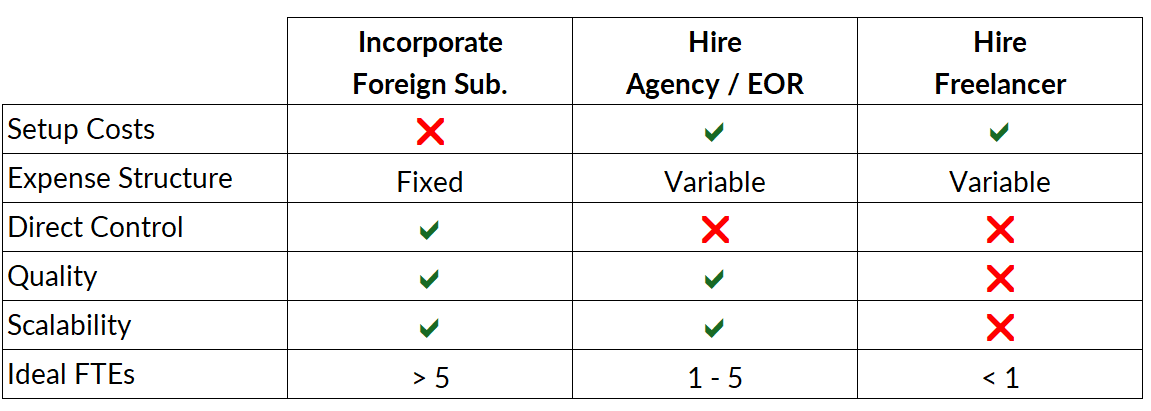With the 2024 presidential election behind us, you should now prepare for how Trump’s new administration will impact your business. Keep in mind nobody truly knows what is in store – Trump’s 2016 campaign introduced numerous business-friendly promises, some of which were only partially realized or left unfulfilled.
While it’s difficult to predict exactly how a second term might unfold, examining key aspects of Trump’s economic platform can offer some insights.
Tariffs: Mixed Impacts for Small Businesses
One of Trump’s signature moves during his first term was an increase in tariffs on foreign goods, especially from China. Trump campaigned on expanding this tariff strategy in a second term, potentially raising prices on imports and emphasizing “Made in America” products. For small businesses, tariffs present both opportunities and challenges.
Tariff Benefits
As tariffs increase the effective price of foreign goods, domestic manufacturers could see a boost in demand. This could be a competitive advantage to American-made products in sectors like manufacturing, textiles, and agriculture, benefiting businesses that are already fully domestically sourced.
Tariff Challenges
Many small American businesses rely on global supply chains for affordability. For retailers, importers, and small manufacturers with suppliers overseas, increased tariffs would lead to higher costs.
Adjusting supply chains from overseas to domestic sources can be a long, complex, and costly process—often impossible for smaller businesses with limited resources. Businesses in these situations might face tough decisions, from passing costs on to consumers to finding new suppliers, or even pivoting their operations entirely.
Exporters may also face retaliatory tariffs, creating a major reduction in demand.
In short, while tariffs may protect certain industries, many small businesses dependent on international supply chains could find themselves under considerable financial strain, needing to make rapid, costly adjustments to their sourcing strategies.
Tax Cuts for Small Business Owners
Trump has pledged to extend and even expand the tax cuts introduced in the 2017 Tax Cuts and Jobs Act (TCJA). The TCJA included reductions in corporate tax rates and provided a 20% deduction for pass-through entities—an especially significant benefit for small business owners.
Tax Cut Benefits
Extending the 2017 tax cuts could provide small businesses with significant savings, allowing owners to reinvest in their businesses, increase hiring, or offset some of the costs of higher inflation or tariffs. Lower tax rates could mean more capital for growth initiatives, tech investments, or wage increases that help attract talent.
Tax Cut Limitations
It’s worth noting, however, that the 2017 tax policies largely favor businesses with substantial profits. Many smaller, lower-margin companies may feel only limited effects from these cuts. Additionally, if federal tax revenues drop due to extended tax cuts, government spending may need to decrease, potentially affecting public services that indirectly support small business growth, such as local infrastructure and workforce training programs.
While many small business owners may appreciate the extra funds from tax cuts, the long-term implications of federal budget adjustments could present a new set of challenges.
Inflation: Keeping an Eye on Rising Costs
Economic experts suggest that Trump’s fiscal policies could contribute to increased inflation, especially if coupled with further tariffs and tax cuts. While inflation has already been a challenge for small businesses in recent years, the prospect of further increases in operational costs could have substantial effects.
Inflation Impact
Higher inflation affects nearly every aspect of running a small business. Rising costs for materials, labor, and everyday expenses mean businesses may need to increase prices to protect profit margins. However, small businesses with highly price-sensitive customer bases might struggle to pass these costs on without risking customer loyalty.
Inflation Strategies for Business Owners
Small businesses should prepare for the possibility of higher inflation by keeping a close watch on expenses and adjusting pricing strategies as needed. Strategic purchasing, stockpiling key materials, and negotiating long-term contracts with suppliers are possible ways to mitigate inflation’s effects. Additionally, maintaining cash flow flexibility is crucial, as inflation could create unexpected cost pressures over time.
Check out our inflation strategies article for more information.
The takeaway for small businesses is to prepare for rising costs and stay proactive about managing them, as inflation can erode profit margins quickly if left unchecked.
Monetary Policy: Favorable Conditions under Any President
Regardless of who is in office, monetary policy under the Federal Reserve will likely continue its current trajectory, with lower interest rates encouraging borrowing and investments. Small businesses may see expanded access to affordable capital, an advantageous environment for funding growth initiatives.
Low Interest Rate Benefits
For small businesses, low-interest rates are a major boon. These conditions make it easier for companies to take out loans to finance expansions, update equipment, or invest in technology upgrades. Coupled with the prospect of higher inflation, the real cost of capital may be very low over the next 24 months.
Equity investors also seek out riskier investments, like startups, as interest rates drop. As a result, we may see more Angel and Venture Capital activity in the next 4 years.
Low Interest Rate Considerations
Low-interest rates paired with rising inflation can create a double-edged sword. While loans may be cheaper, inflation could still impact the overall cost structure of a business, making profitability goals harder to achieve. High leverage with low profits increases the risk of financial distress.
Business owners considering taking on debt should weigh this decision carefully and have clear plans for generating the cash flow needed to handle loan repayments.
For small businesses looking to expand or invest, the prospect of low-interest rates is a promising sign, but owners should proceed cautiously, balancing potential gains against the risks posed by a fluctuating economy.
Final Thoughts: A Time for Caution and Preparation
Ultimately, the impact of a Trump presidency on small businesses remains uncertain, as his past term demonstrated a mix of ambitious promises and unpredictable outcomes. Small business owners should stay informed and adaptable, ready to adjust their strategies as economic conditions shift. By closely monitoring costs, assessing supply chains, and carefully evaluating financing options, small businesses can be prepared to navigate the challenges and opportunities that may arise under another Trump administration.
As always, diversification and resilience remain key: Small businesses that build strong relationships with their customers, stay flexible in their sourcing and operations, and proactively manage cash flow will be better equipped to face whatever changes come their way.




